Abstract
OBJECTIVE--To estimate the proportion of preventable congenital abnormalities in Hungary. DESIGN--Analysis of available Hungarian data-bases and of the effectiveness of primary, secondary, and tertiary preventive methods. SETTING--Databases of ad hoc epidemiological studies and of the Hungarian congenital abnormality registry. MAIN OUTCOME MEASURES--Prevalence at birth and prevalence after prevention in 73 congenital abnormality types or groups. RESULTS--Preventive methods are available for 51 (70%) of the 73 congenital abnormality types or groups evaluated. The birth prevalence of all congenital abnormalities could be reduced from 65 to 26 per 1000; thus 39 per 1000 (60%) are preventable. Without congenital dislocation of the hip, which is unusually common in Hungary, the preventable proportion of congenital abnormalities is 52%. CONCLUSION--Many congenital abnormalities can be prevented, but as they do not represent a single pathological category there is no single strategy for their prevention.
Full text
PDF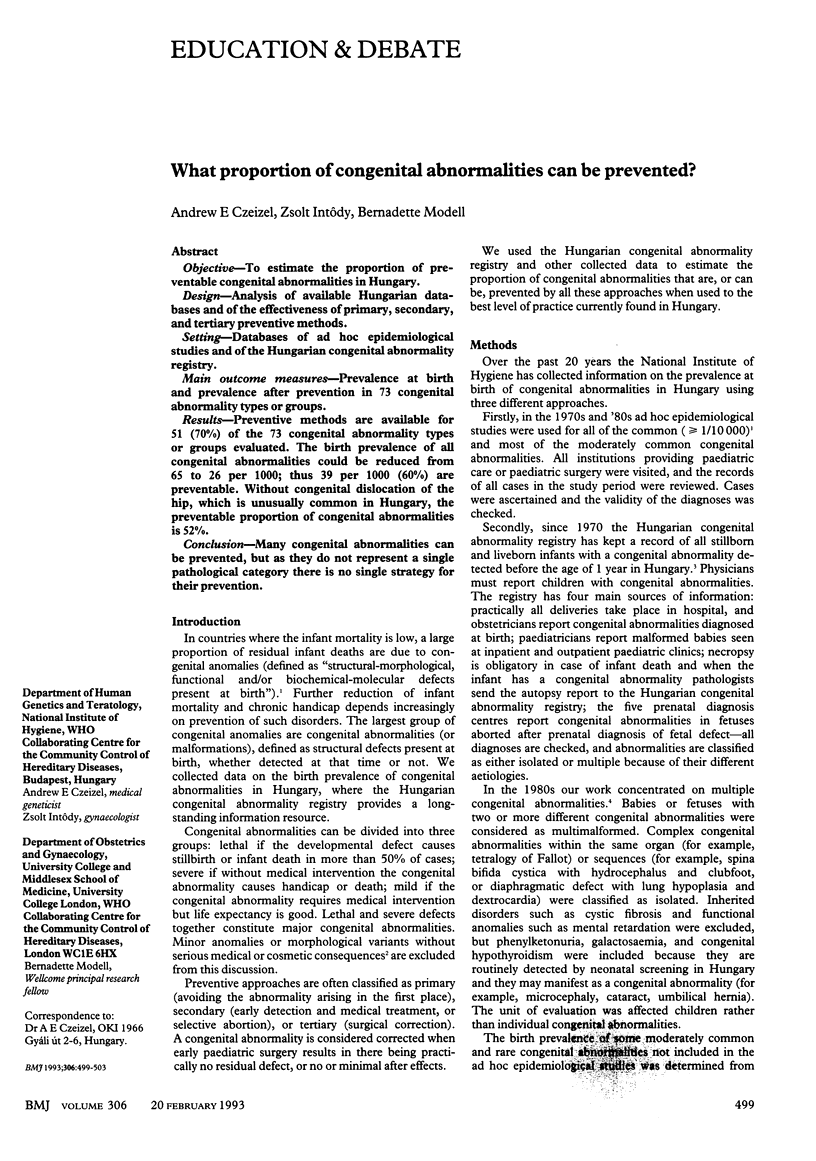
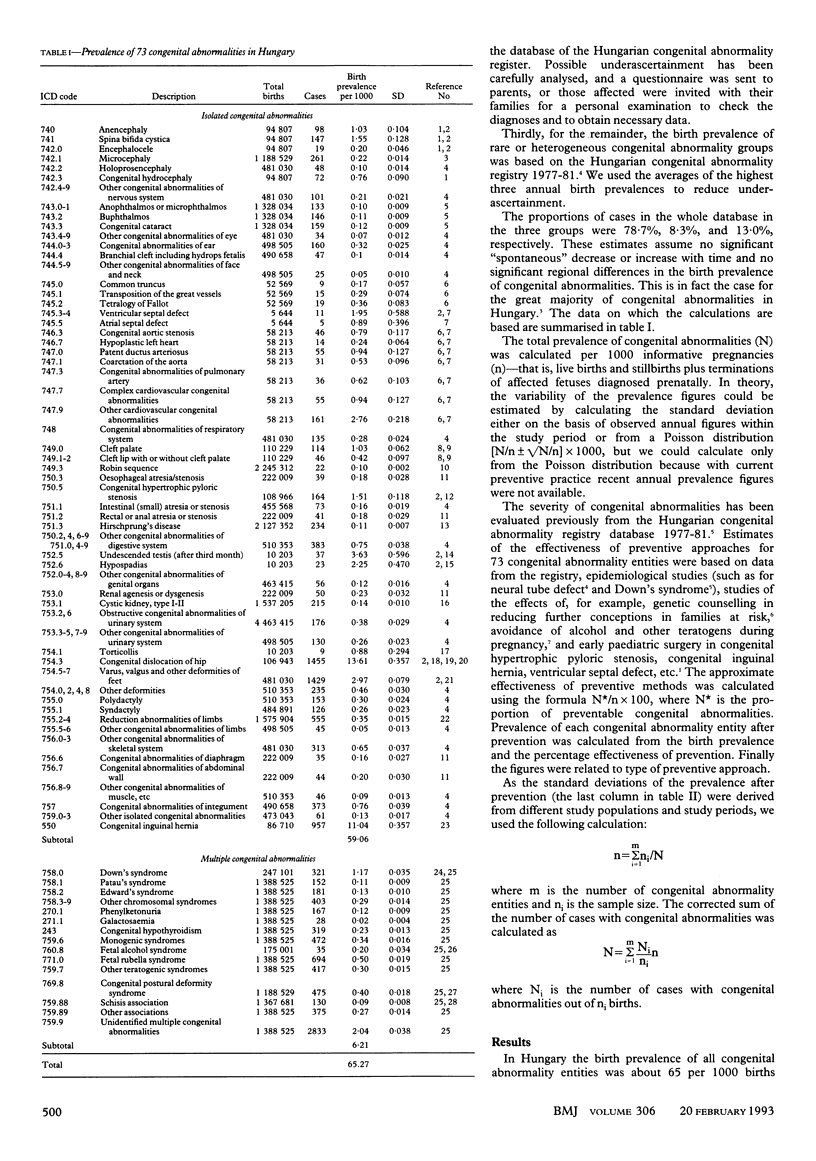
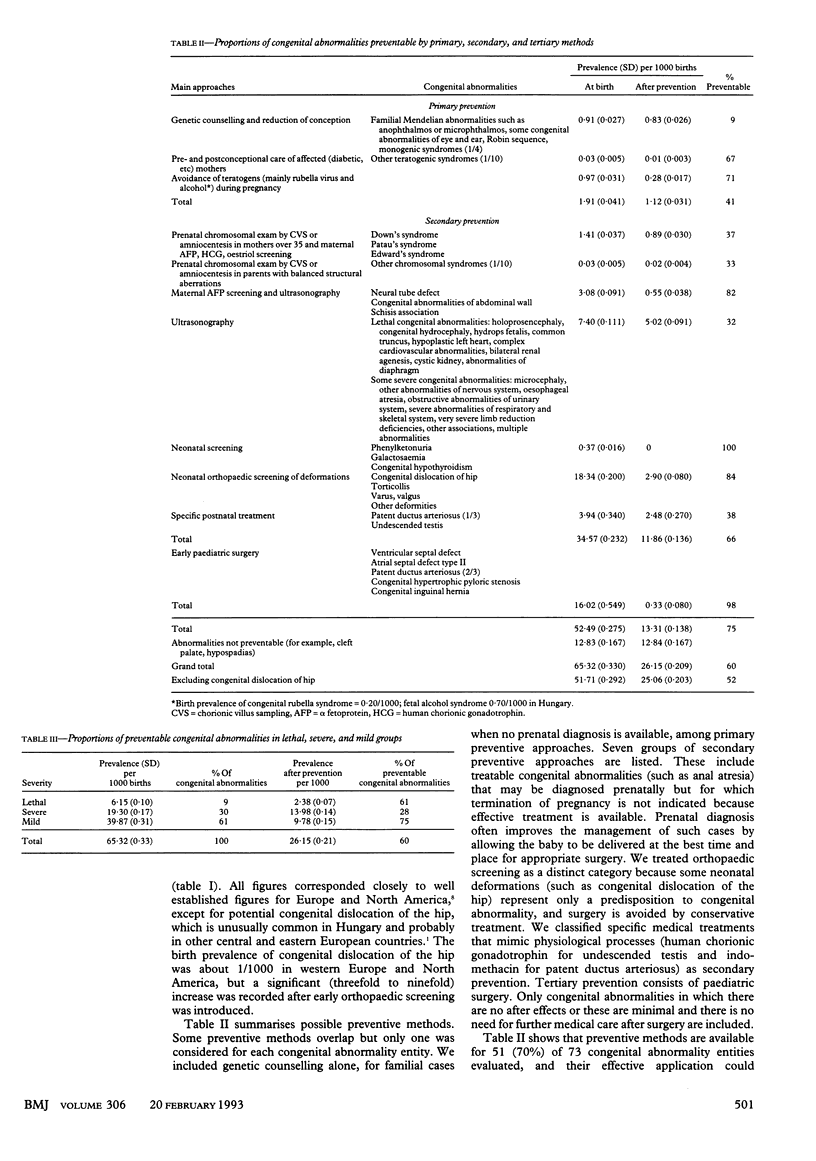
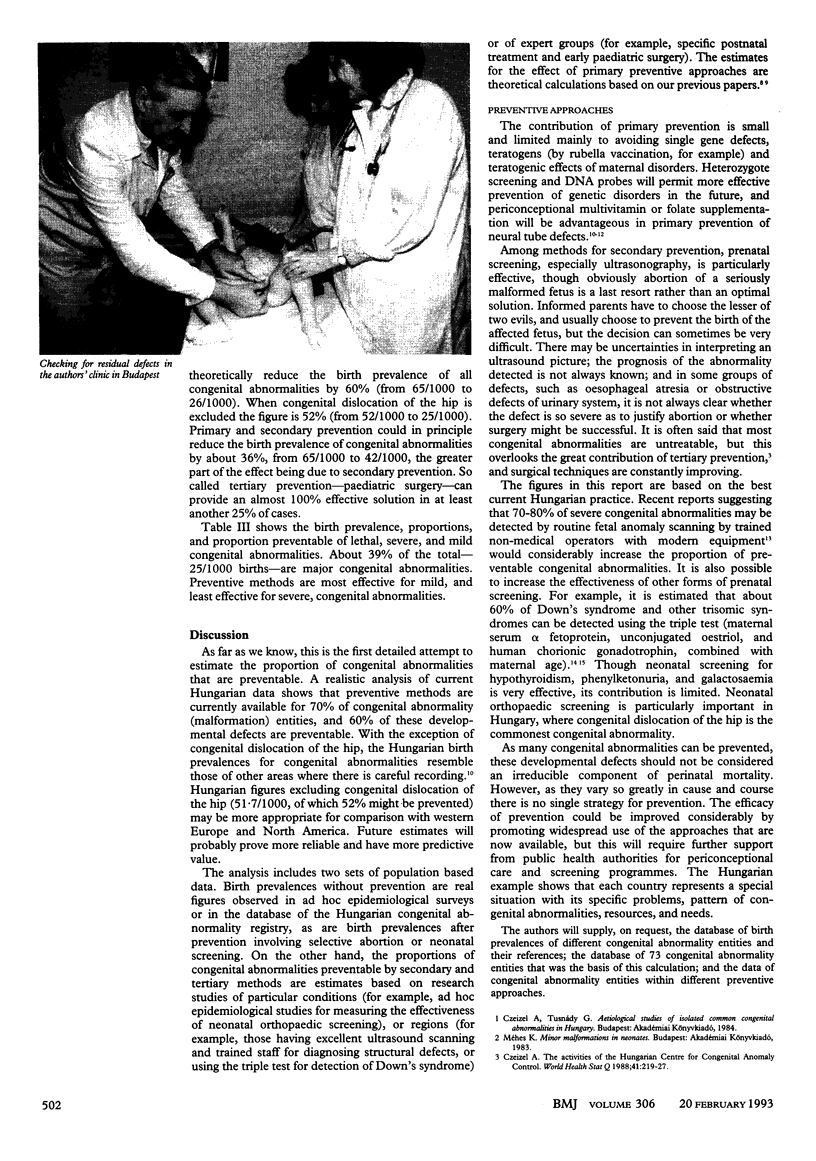
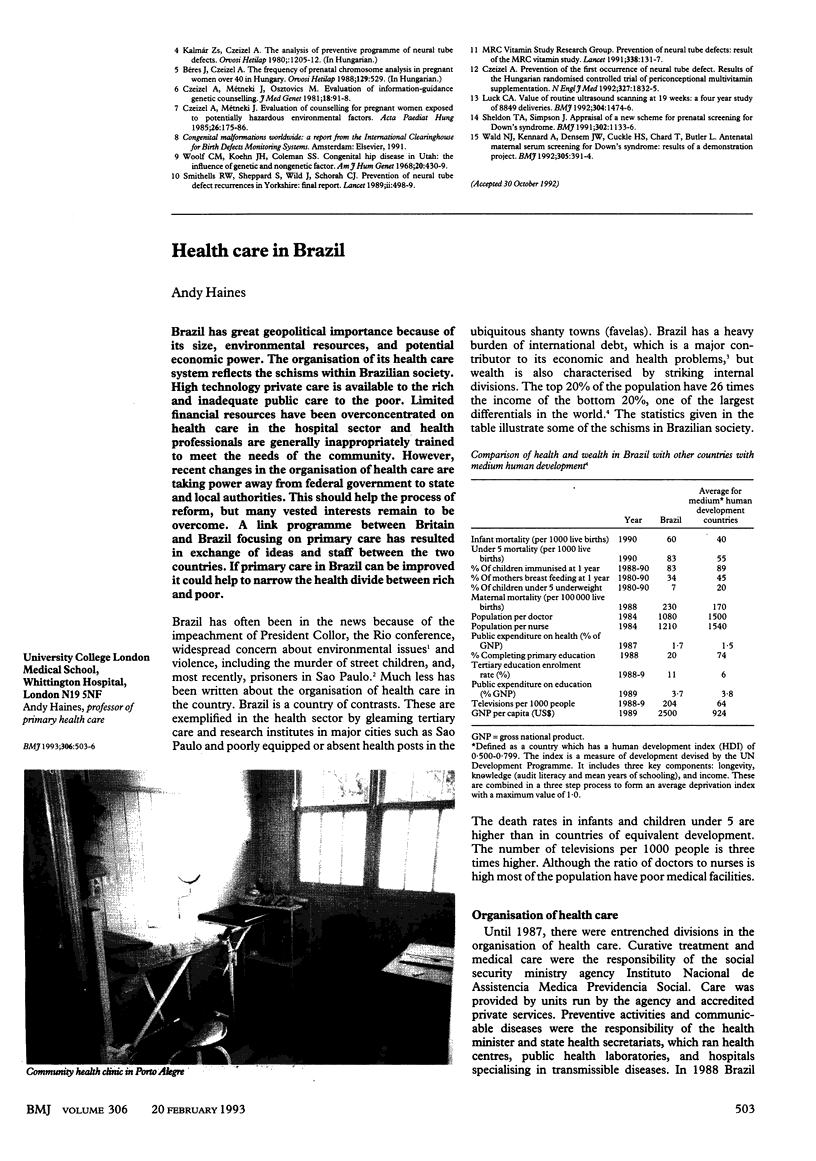
Images in this article
Selected References
These references are in PubMed. This may not be the complete list of references from this article.
- Czeizel A. E., Dudás I. Prevention of the first occurrence of neural-tube defects by periconceptional vitamin supplementation. N Engl J Med. 1992 Dec 24;327(26):1832–1835. doi: 10.1056/NEJM199212243272602. [DOI] [PubMed] [Google Scholar]
- Czeizel A., Métneki J. Evaluation of counselling for pregnant women exposed to potentially hazardous environmental factors. Acta Paediatr Hung. 1985;26(3):175–185. [PubMed] [Google Scholar]
- Czeizel A., Métneki J., Osztovics M. Evaluation of information-guidance genetic counselling. J Med Genet. 1981 Apr;18(2):91–98. doi: 10.1136/jmg.18.2.91. [DOI] [PMC free article] [PubMed] [Google Scholar]
- Czeizel A. The activities of the Hungarian Centre for Congenital Anomaly Control. World Health Stat Q. 1988;41(3-4):219–227. [PubMed] [Google Scholar]
- Luck C. A. Value of routine ultrasound scanning at 19 weeks: a four year study of 8849 deliveries. BMJ. 1992 Jun 6;304(6840):1474–1478. doi: 10.1136/bmj.304.6840.1474. [DOI] [PMC free article] [PubMed] [Google Scholar]
- Sheldon T. A., Simpson J. Appraisal of a new scheme for prenatal screening for Down's syndrome. BMJ. 1991 May 11;302(6785):1133–1136. doi: 10.1136/bmj.302.6785.1133. [DOI] [PMC free article] [PubMed] [Google Scholar]
- Smithells R. W., Sheppard S., Wild J., Schorah C. J. Prevention of neural tube defect recurrences in Yorkshire: final report. Lancet. 1989 Aug 26;2(8661):498–499. doi: 10.1016/s0140-6736(89)92103-x. [DOI] [PubMed] [Google Scholar]
- Wald N. J., Kennard A., Densem J. W., Cuckle H. S., Chard T., Butler L. Antenatal maternal serum screening for Down's syndrome: results of a demonstration project. BMJ. 1992 Aug 15;305(6850):391–394. doi: 10.1136/bmj.305.6850.391. [DOI] [PMC free article] [PubMed] [Google Scholar]
- Woolf C. M., Koehn J. H., Coleman S. S. Congenital hip disease in Utah: the influence of genetic and nongenetic factors. Am J Hum Genet. 1968 Sep;20(5):430–439. [PMC free article] [PubMed] [Google Scholar]




